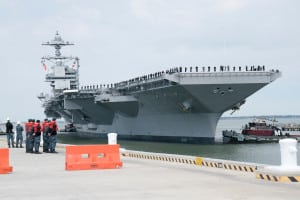
National Harbor, Md. -- The president of Huntington Ingalls Industries’ [HII] Newport News Shipbuilding (NNS) said the company sees a two-carrier purchase of the next Gerald R. Ford-class carriers as saving upwards of $1.6 billion over buying them, separately.Jennifer Boykin, executive vice president of HII and president NNS, told reports here during the Navy League’s annual Sea Air Space expo that these savings are based on labor efficiency, not repeating engineering and planning for two hulls, creating material economic order…

 By
By 











